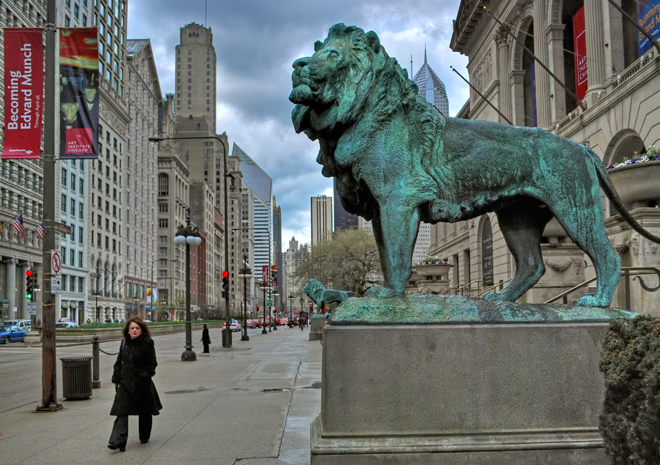
More photos from my rainy day visit to Chicago. And more experimentation with high density range (HDR) photographs. A camera can only capture (in one image) a small fraction of the tones in a given scene. HDR software allows you to blend several images taken at different exposures into one image with an incresed range of tones.

The effect can be jarring, because a) we're used to seeing a limited range of tones in a photograph and b) the resulting image is a type of hyper-reality.
I'm liking how HDR brings out the textures in a scene. I'll keep experimenting and let you peek in on how things are coming.
It was a busy weekend, photography-wise. On Saturday, I had the good fortune to photograph four young women, good friends who had gone their separate ways, became mommies and decided to reunite for a weekend. One of the mommies, from Idaho, located me through an internet search engine and hired me to photograph the group, along with individual mommies and babies. Lots of fun.
On Sunday, I photographed a number of jazz combos from Roosevelt University as they performed their "final exams" for the music faculty. The venue was not the staid halls of academia, but a Chicago nightclub called Martyr's. A long afternoon, but lots of good photos to be had (and processed).
I'd better get to work. I'll be posting sample pics from the two photo gigs on Your Best Light, my blog for contract photography.
Photographs © 2009 James Jordan.




2 comments:
I have very mixed feelings about HDR. I'm not generally a huge fan, but I have seen some truly amazing HDR images. I think HDR is difficult to control. Having never done any myself...wouldn't even know where to begin, so I'm not a very good judge of it. I like the top photo. I can tell it is HDR which might be one of the problems I personally have with HDR. But this is nice.
Laurie,
I generally have negative reactions to a photo which screams tone mapping and from-here-to-eternity-focal points. And there are more controls in the HDR software than I know what to do with at present.
What I'm hoping to achieve is a "best of both worlds" type of imagery with an expanded tonal range without looking too "fake."
We'll see how it goes.
Post a Comment